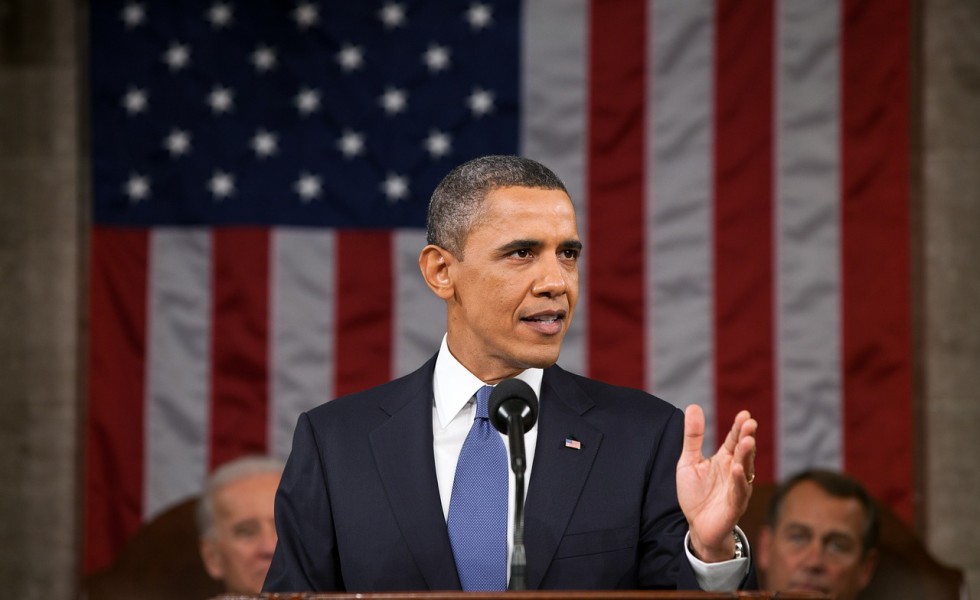The Last Free Trader in America
Posted on September 21, 2016

Can trade—free, fair, or otherwise—get some love this election season?
Fat chance.
In fact, the only national politician four-square in favor of global trade and its latest multi-nation deal, the Trans-Pacific Partnership, or TPP, is no one anyone could have seen in that role: Barack Obama.
Holy cow, what’s next; the Chicago Cubs in the World Series?
Perhaps, and if so, that Chicago team, the Cubs, probably has a better chance to win in October than the other Chicago team, the Obama White House, has at winning in November when the President hopes to move TPP through an increasingly reluctant Congress.
Political rust bucket that it has become, TPP’s slow sinking isn’t due to just presidential sniping. If it goes down, other trade traitors will have had a hand.
For example, Republican Sen. Pat Toomey, locked in a tough re-election bid in Pennsylvania, denounced TPP in mid-August while trolling for blue-collar votes. It was a stunning turnaround for Toomey, the former president of the Club for Growth, Big Biz’s most ardent free trade lobbying group.
Toomey may be a turncoat but he isn’t a stupid turncoat. He, like many other politicians sense that this complex, 12-nation trade deal—like free trade itself—has lost value with American rank-and-file workers and, just as importantly, white collar voters.
This isn’t new. The World Trade Organization’s Doha Development Round began in 2001 with 2005 as its target date for completion. After endless sessions of ceaseless talking, negotiations turned belly-to-the-sun last November in Nairobi (at the ripe age of 14) without a final deal.
Doha’s collapse, in truth, arrived years earlier without anyone recognizing that the world—and international trade deals—had gotten smaller. The template, NAFTA, or the North American Free Trade Agreement, was already in place and an alphabet soup of other regional deals (CAFTA, KORUS) and other nation-to-nation deals (Australia, Israel, Panama, Peru…) soon followed even as the Doha yakkers continued to yak.
In the meantime, the small deals got bigger and the big deals got smaller.
But TPP bucks that trend; it’s big and getting bigger. For example, can anyone possibly know what TPP’s 18,000 tax changes mean for American farmers, companies, and sovereignty in a deal that includes 11 other nations and 40 percent of the world’s existing trade?
The answer is, of course, no. Not now, not ever.
Moreover, even those who claim to have some insight often confess that when they view TPP over the next 15 years, the deal’s implementation period, its down-on-the-farm effect will be, at best, marginal and, at worst, virtually invisible.
For example, in its Feb. 2016 analysis of TPP, the unabashedly free-trading American Farm Bureau Federation (AFBF) said the deal would bring “increases for corn (5 cents a bushel), soybeans (12 cents per bushel), wheat (2 cents per bushel)… and… cotton prices are not projected to change…”
Golly, a nickel, 12 cents, two cents, and, well, nothing—and that’s if everything works as AFBF forecasts. Sure, that’ll happen.
In truth, it’s far more likely that American farmers will get a bigger market bump out of one wheat-soaking April rain in Kansas or a warm, dry July in Indiana than TPP will or can ever deliver.
The AFBF all but confirms this outlook in its report’s bottom line: “After… full implementation net income should be $4.4 billion higher with U.S. ratification than without.”
If that $4.4 billion yearly boost to U.S. net farm income does materialize over the next 15 years, it will be roughly equivalent to the $4.2 billion more U.S. taxpayers will send to American farmers in direct farm program payments this year than just two years ago.
In their analysis of TPP, however, neither the AFBF nor the Obama White House estimated just how many American farmers and ranchers will be around for its paltry payday.
© 2016 ag comm
Share This